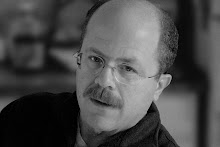The second day of July, 1776, will be the most memorable epoch in the history of America. I am apt to believe that it will be celebrated by succeeding generations as the great anniversary festival. It ought to be commemorated as the day of deliverance, by solemn acts of devotion to God Almighty. It ought to be solemnized with pomp and parade, with shows, games, sports, guns, bells, bonfires, and illuminations, from one end of this continent to the other, from this time forward forever more.
One of the fun things about the fourth is fireworks! Many folks like to try to take pictures of them, but too often end up with something like a white flash against a dark background. How do you take good pictures? Here are a few tips that should work, regardless of whether you're shooting with a pocket camera or professional dSLR:
- Get a good clear location. Closer (but safe) is obviously nice.
- Brace your camera. Use a tripod if you have one; if not, set it on something steady (a wall, a table, etc).
- Use "Fireworks" mode if you have it; otherwise try "Sports" mode (no guarantees, but it's a similar setting)
- Fresh batteries, empty memory cards. Shooting fireworks inherently takes a lot of shots, most of which you'll throw away. In order to get the few good ones, you'll need space for all the bad ones.
- Turn off the flash! It won't help: it will drain your batteries much faster, and if you're in a crowd, it will only light up the back of the heads in front of you. Not pretty.
- Zoom out. If your camera has zoom, you'll instinctively want to zoom in. You'll miss it. Zoom back and pick a likely patch of sky.
- Manual focus. Your camera won't generally have time to lock onto the fireworks. Simply focus out to infinity.
- Low ISO: Set your camera to its lowest sensitivity: ISO 100 (lower if you've got it). Remember you're shooting at night, but what you want to capture is as bright as day.
- Smaller aperture: This helps your depth of field. You might have to play with this to nail the exposure.
- Longer shutter times. Usually I use around 3 seconds, then play with it, depending on the pacing of the fireworks. I'll shorten it up if there's a grand finale. The longer time gives those beautiful trails from the burst that you're looking for.
- Use a remote: if you trip your shutter normally, you'll often get squiggly trails in the fireworks from the slight wobble you introduce. If you don't have a remote, use a timer release.
- Once I find a good shutter time, I usually play with the aperture.
- After I know that I've nailed some nice shots, I usually start taking pictures of people (after all, I'm primarily a people photographer, so it's natural for me). Especially good are kids with that look of wonder in their faces. If I can get it under a strongly-colored light from a fireworks shot (blue or red, for example), that's a winner!
- The starbursts are fine, but they become very similar after a time. I like to introduce some interest by putting them "in context:" for example, using a zoom lens, if I'm far enough from the show, I like to put the silhouette of a family in the foreground, or show them lit by the fireworks. By using a zoom, I can manage the composition.
- There are often sideshows at fireworks shows (fire-eaters, etc).




No comments:
Post a Comment